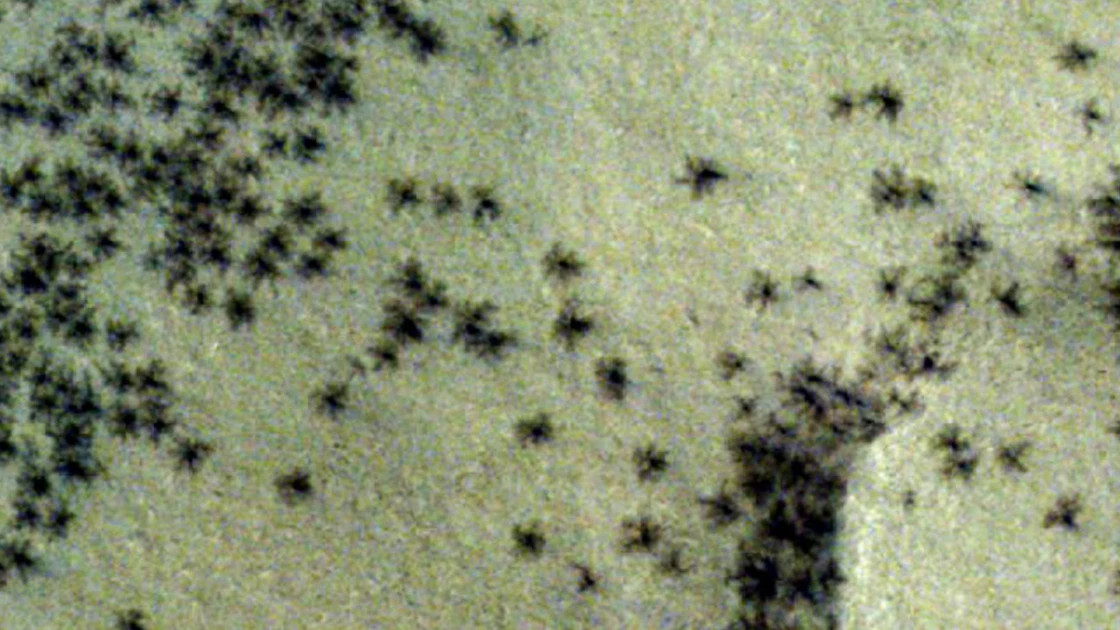
No, there are no insects on Mars (As far as we know) but new photos were taken by his satellite European Space Agency (ESA) has scientists and astrophysicists very interested in what it is all about.
these Black “spiders”. The images taken by the European Space Agency's spacecraft are clearly not real arthropods on the red planet, but dark black formations resembling spikes have been spotted. Near “Inca City”It is the south pole of Mars. This area is so named because of its special morphological features reminiscent of the ruins of an Inca city, although it is officially called the Angustus Labyrinth and was discovered in 1972 by NASA's Mariner 9.
But how are they created? As you can see, sunlight falls on layers of carbon dioxide that have remained there since the winter months. The light causes the carbon dioxide ice at the bottom of the layer to turn into a gas, which builds up over time, then cracks as it attempts to escape to the surface of Mars during the Martian spring, taking several materials with it.
Along the way, these gases expand, rise and explode from the ice sheets, carrying with them dark dust that erupts in huge geysers. When the black dust blows off the ice, it falls into the upper layer of Mars, creating this spider-like pattern, which… Its diameter can start from 45 meters and reach up to 1 kilometre. Images recorded by Mars Express Orbiter High Resolution Stereo Camera (HRSC). The European Space Agency reveals one side of these dark spots.
What gives the full picture of Mars' black spiders is the CaSSIS (Color Surface and Stereo Imaging System) instrument on ESA's ExoMars Trace Gas Orbiter, which can see in a wider range of wavelengths and detect the spider-like spirals spreading outward, just beneath the surface of the ice. .
As for how the Inca city was formed, this is still a mystery, but one theory says that it was the sand dunes that turned into stone over time. Another says they are the remains of ancient Martian glaciers that left behind high walls of sediment as they retreated.
See more pictures:

“Avid problem solver. Extreme social media junkie. Beer buff. Coffee guru. Internet geek. Travel ninja.”








More Stories
Top 20 Most Played Games in June 2024
Play Age of Mythology: Retold Playtest starting today!
Impressive Maniskin Concert in Greece